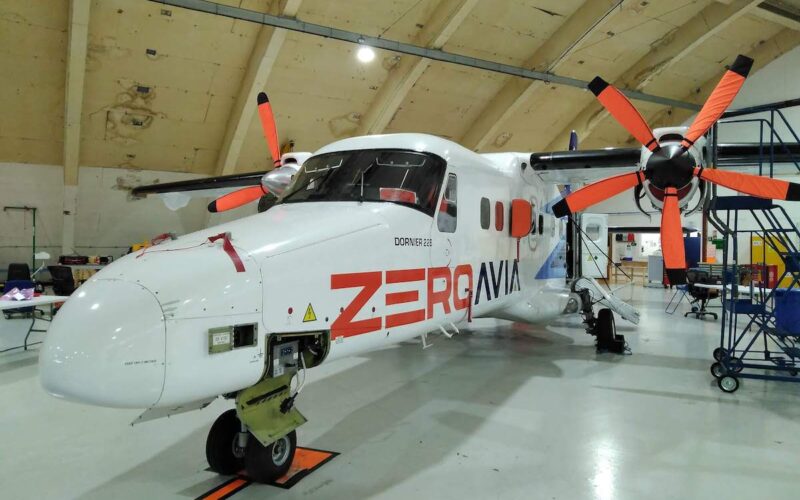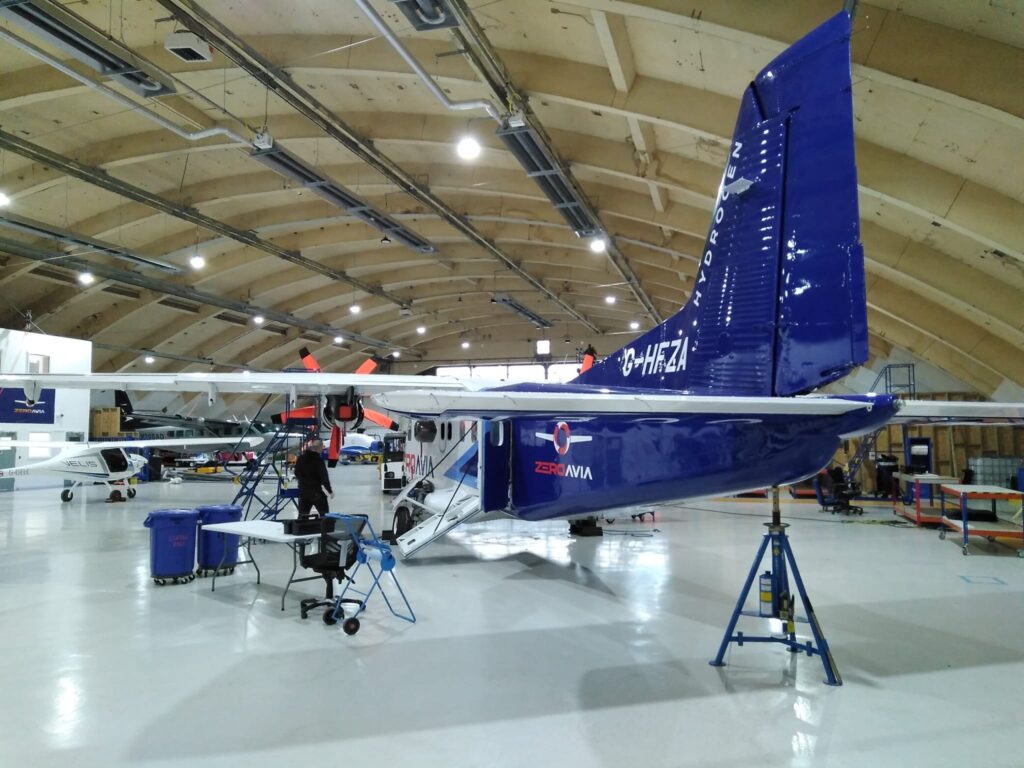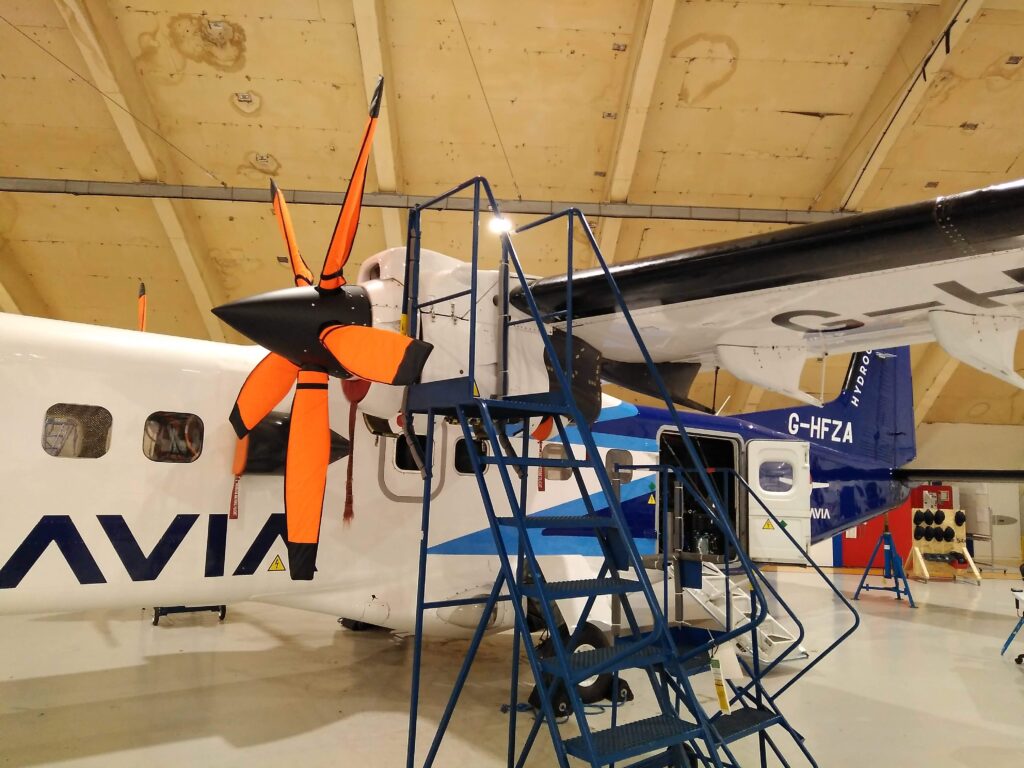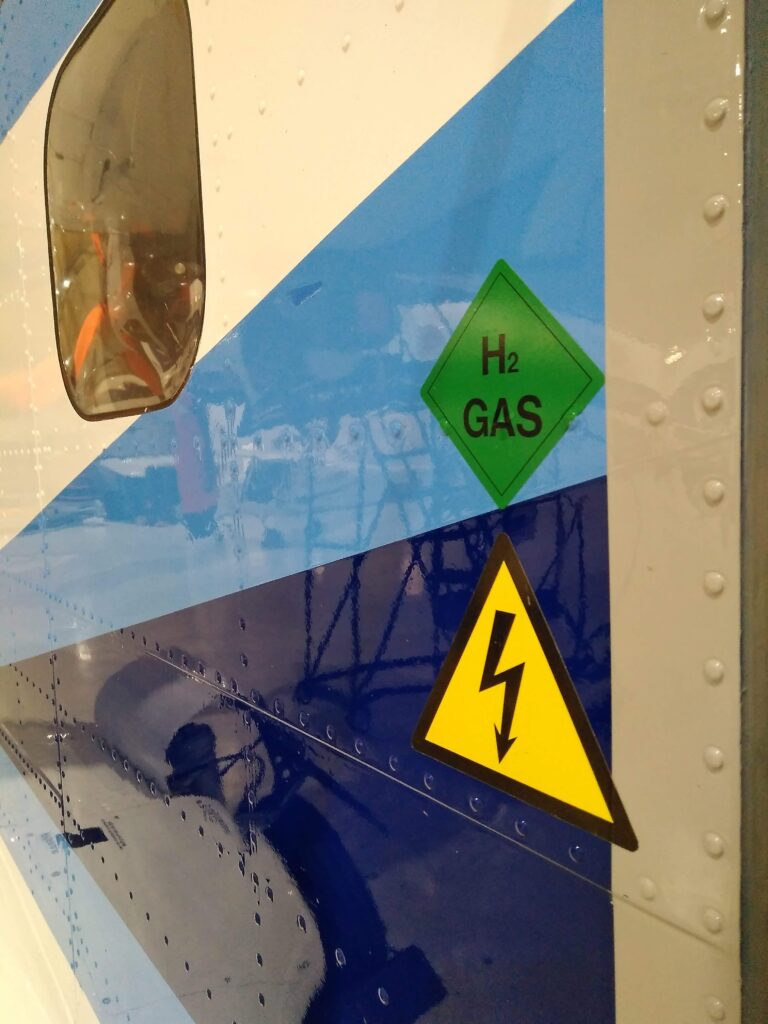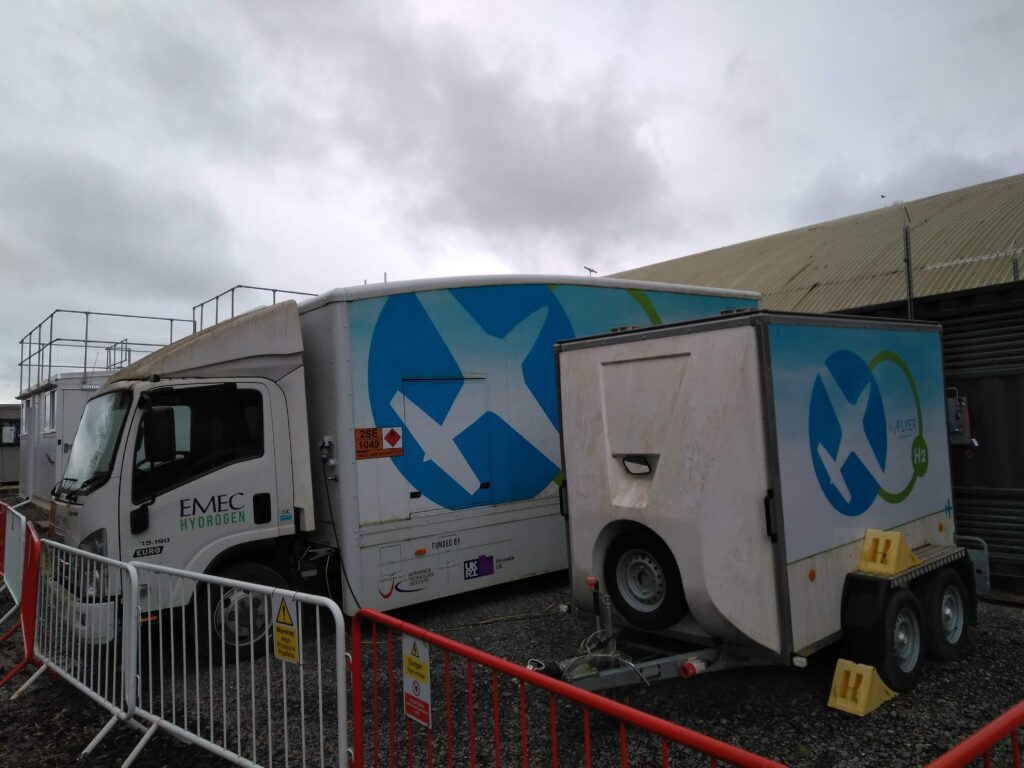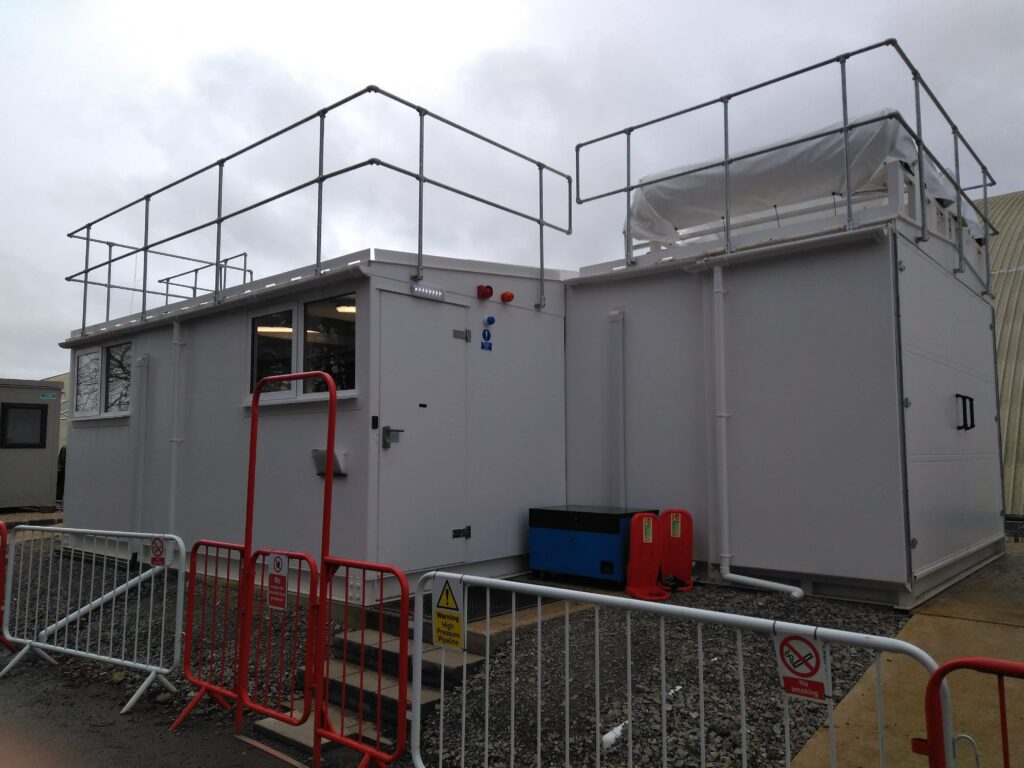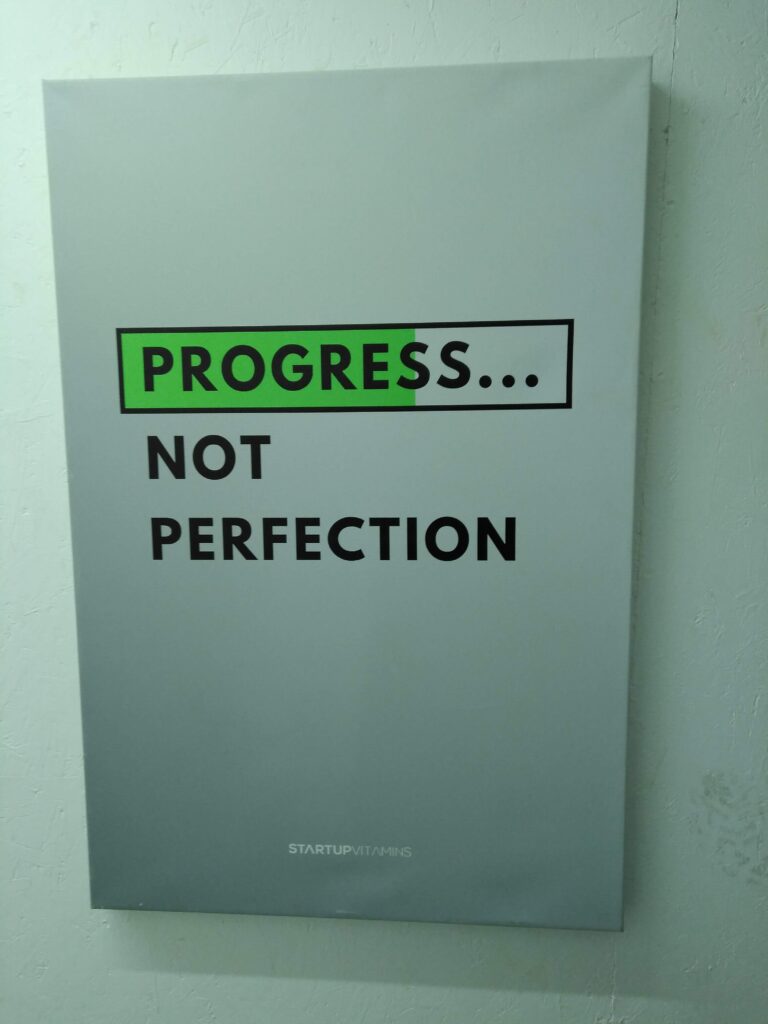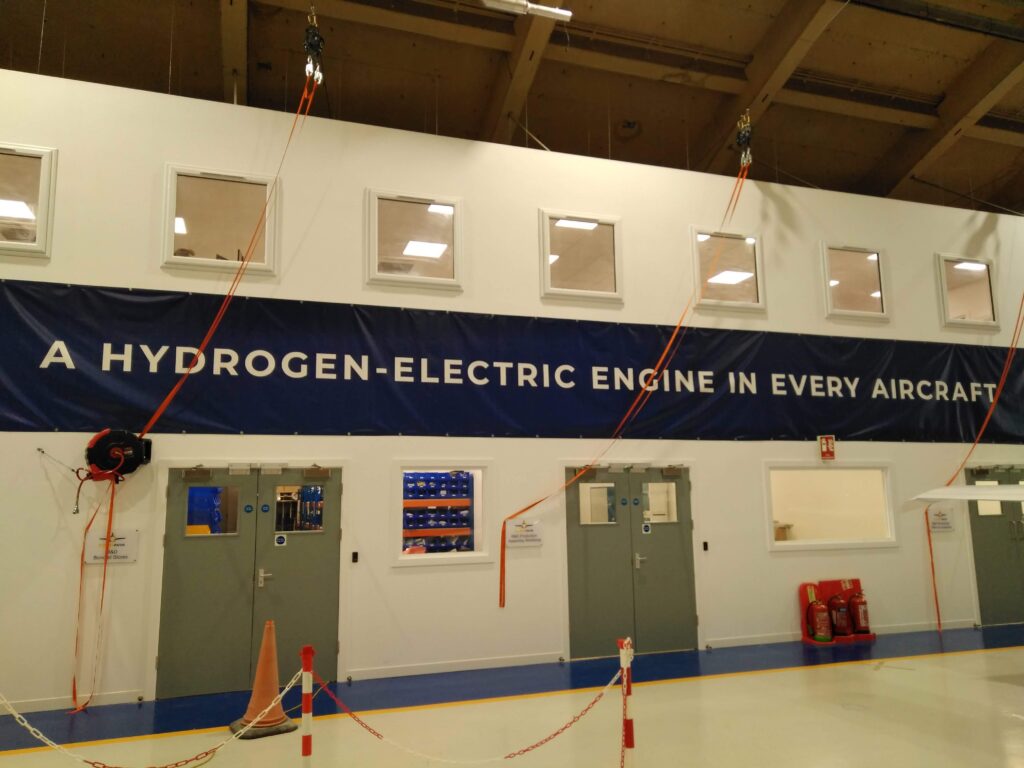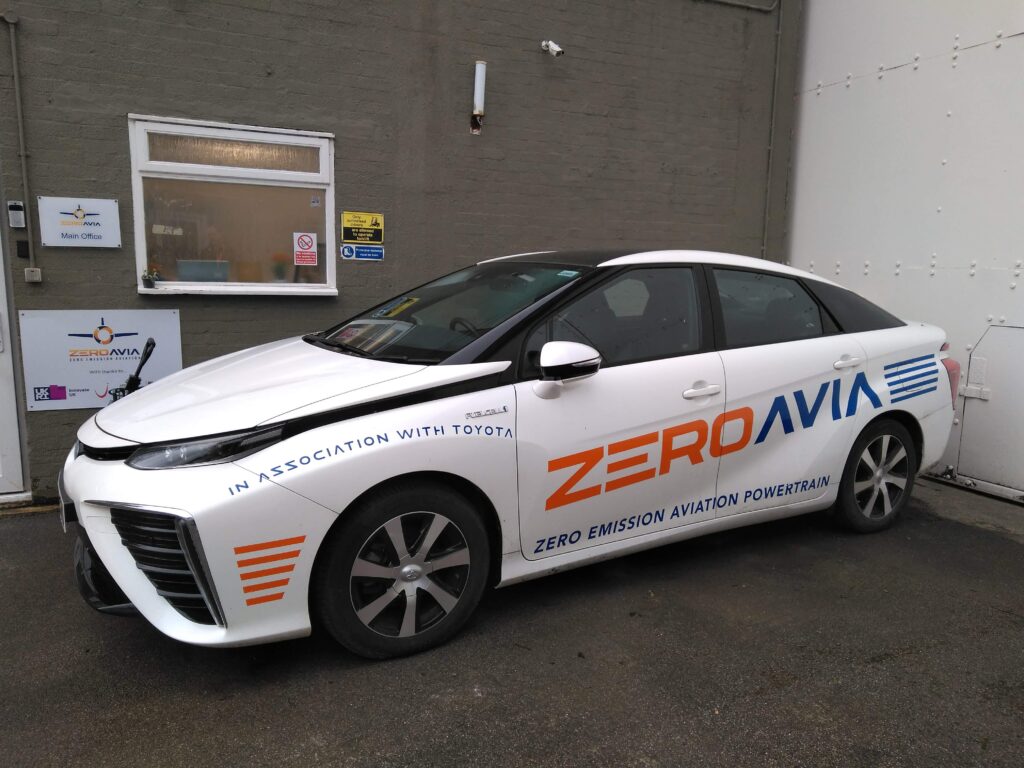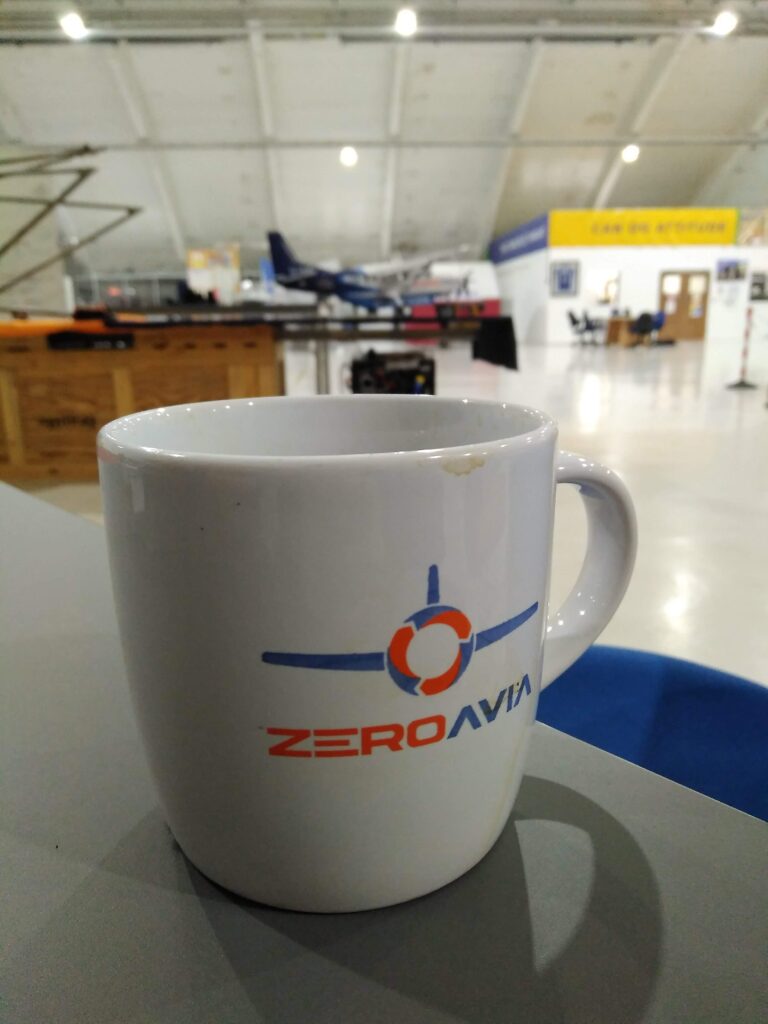The Cotswolds is a picturesque part of rural England, better known for its postcard-like villages than for being at the center of a burgeoning technological revolution.
But it is in this unlikely setting that ZeroAvia, an Anglo-American startup backed by the likes of Bill Gates, British Airways and Airbus, is working to bring a zero-emissions hydrogen propulsion system to market which promises to redefine the way we understand regional air travel.
AeroTime recently traveled to Cotswold Airport (GBA), a former Second World War Royal Air Force air base located in Gloucestershire, some 100 miles west of London. We took an exclusive behind-the-scenes peek at ZeroAvia’s UK operations and saw up close how a new era of hydrogen aviation is taking shape.
What is ZeroAvia?
ZeroAvia is the brainchild of Val Miftakhov, a former Google executive who already has another sustainable mobility startup exit under his belt.
The company was founded in 2017 with the mission to develop hydrogen propulsion technology that will make it possible for the commercial aviation industry to transition to an emission-less future. To achieve this goal ZeroAvia is developing a family of hydrogen-electric powertrains that use a hydrogen-fed fuel cell to turn the electric motors that power the aircraft.
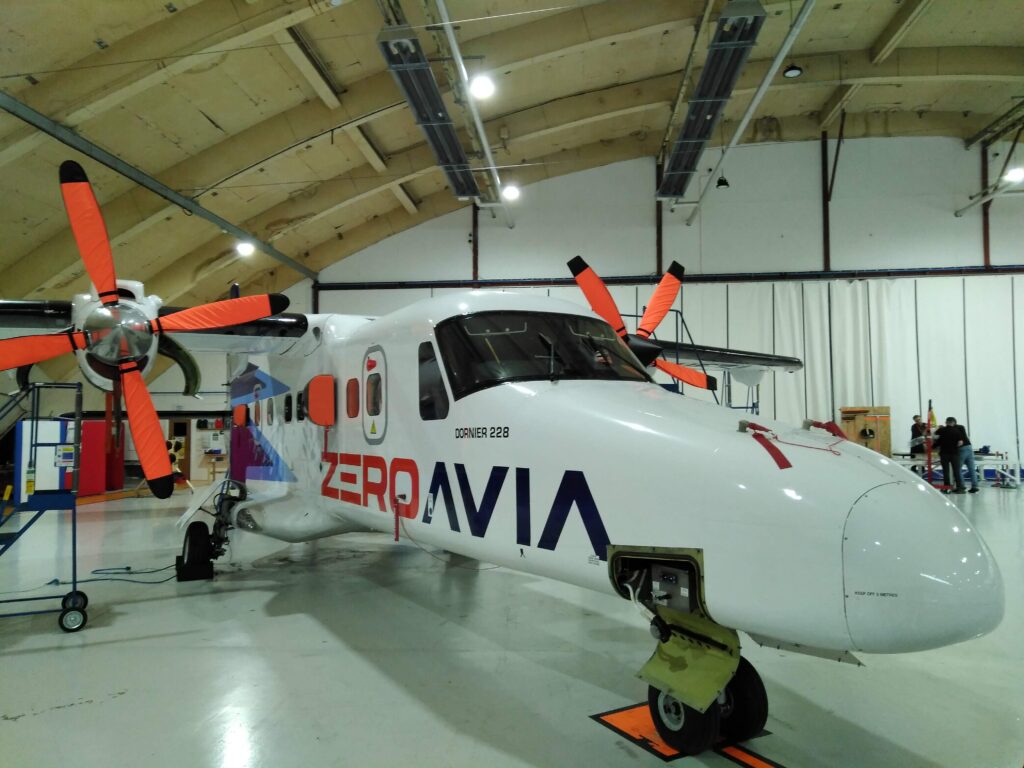
At the moment, ZeroAvia has two propulsion systems under development, each of a different power. The ZA600, delivering 500 to 750 Kw of power, or enough to power an aircraft for up to 19 passengers, and the more powerful ZA2000, whose 2-5 MW will be able to power a DeHavilland Canada Dash 8 or an ATR turboprop for 70 to 80 passengers.
While still a young company by most measures, and notwithstanding some setbacks, such as the crash of one of its test aircraft in 2021, in which no one was injured, ZeroAvia has made notable inroads towards being able to deliver on its vision.
In September 2020, ZeroAvia completed the first ever flight of a commercial-grade aircraft using a hydrogen fuel cell, a specially modified Piper M six-seater. In July 2023, it did the same with a much larger Dornier Do 228, an aircraft that can carry up to 19 passengers in its usual configuration.
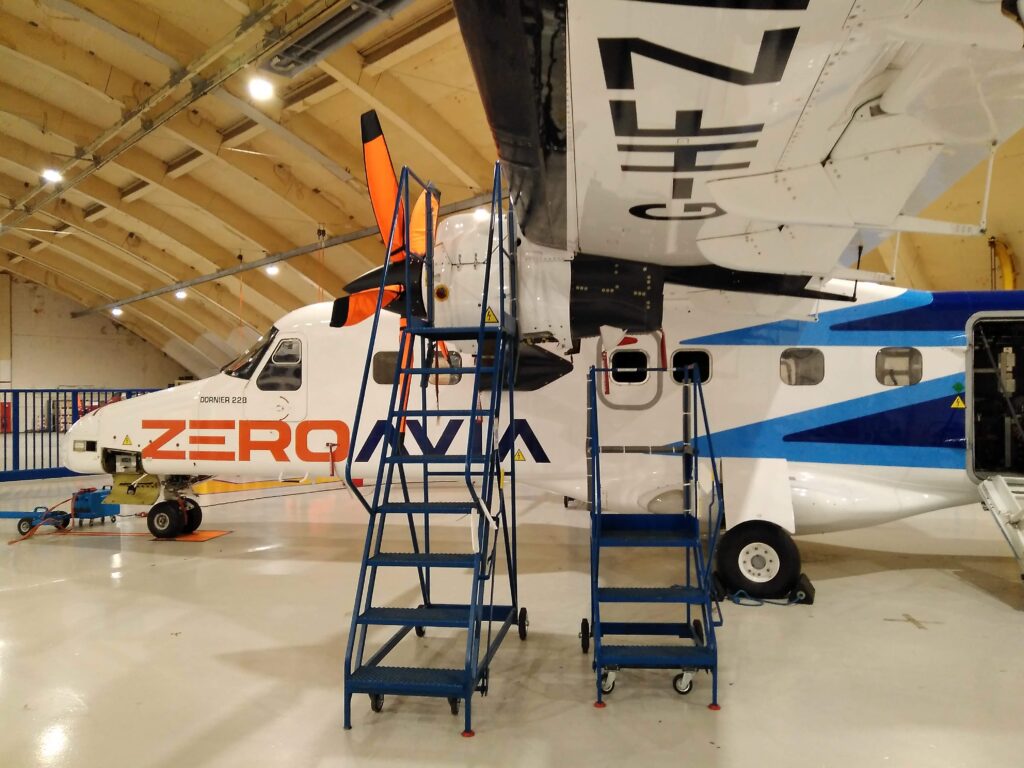
Perhaps just as important is the active role that ZeroAvia is playing in the broader hydrogen ecosystem, bringing together a coalition which includes airports, energy majors, and a diversity of aviation service suppliers, with the goal of kick-starting commercial hydrogen-powered flights before this decade is over.
Sustainable aviation darling
Alaska Airlines’ support is more than financial, with one of the airline’s DeHavilland Canada Dash 8 turboprops being readied to serve as a test aircraft for ZeroAvia’s future ZA2000 powertrain, which is expected to enter service by 2027. However, the aircraft is not based at Cotswolds Airport, but at ZeroAvia’s other R&D center at Paine Field, in Everett, Washington. The startup has its operations and team split between the United States and the UK.
For the time being, ZeroAvia is testing its other propulsion system, the ZA600, on a retrofitted Dornier Do 228 aircraft.
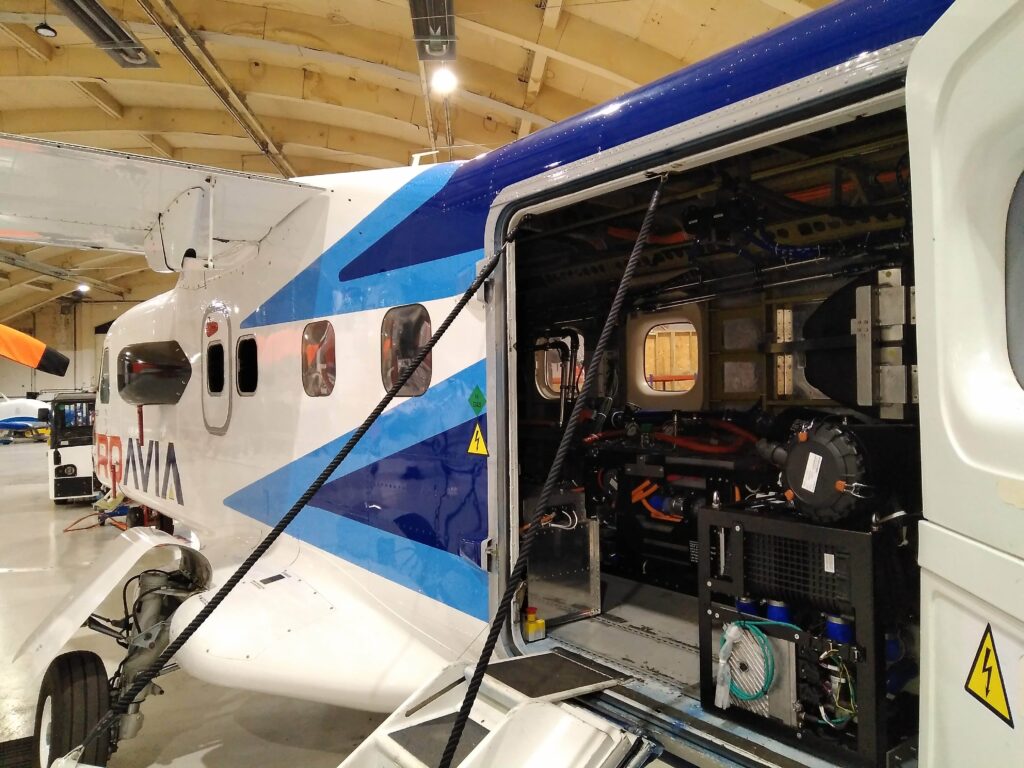
As AeroTime could see during the field visit, the cabin of the airframe has been fitted with the whole hydrogen propulsion set up. This features several tanks containing hydrogen and the fuel cell that powers the aircraft’s left-side propellers.
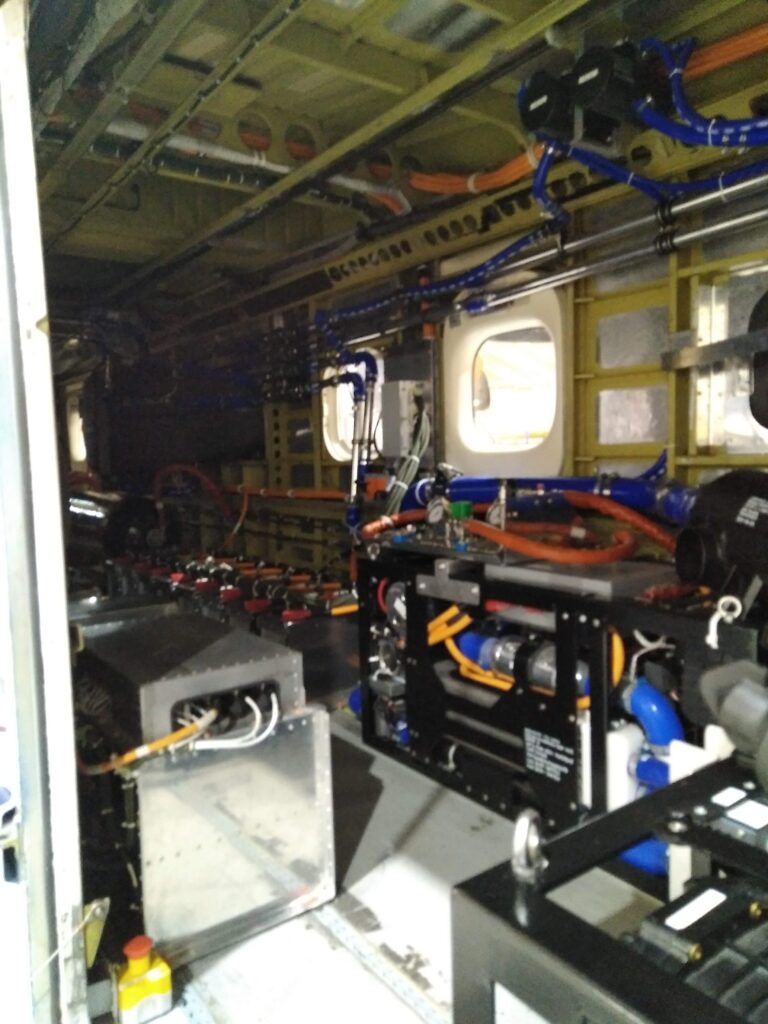
The amount of space needed to hold hydrogen gas, an element that has high energy density but takes a significant volume in its gaseous form, remains an obstacle. Proponents of hydrogen propulsion in aviation need to address this issue so that the technology is competitive with jet fuel.
This is the reason ZeroAvia is also planning to develop liquid hydrogen solutions in the future. Liquid hydrogen can be compacted much more efficiently in a smaller space, but that comes with its own set of technical challenges, not least the need to keep it constantly at a super low temperature of -253 Celsius.
A vertically integrated business
One striking aspect of ZeroAvia’s operations, particularly for a startup, is how vertically integrated it is across the value chain.
ZeroAvia produces its own hydrogen on site at Cotswolds Airport. Its electrolyzer, a piece of equipment that uses electricity from renewable sources to separate the oxygen and hydrogen atoms found in water molecules, is located right under its own roof. Or to be more exact, in a modular, shipping-container-like portable unit located next to the company’s hangar.
Another key technology that ZeroAvia is developing in-house is high-temperature fuel cells. In 2022, ZeroAvia acquired HyPoint, a startup based in Kent, UK, allowing it access to this technology. This is critical in order to scale up fuel cell systems required to power ever larger categories of aircraft.
Being able to operate the fuel cell at higher temperatures makes it possible to pack more power into the same space, therefore expanding the energy density of the entire system.
The technical and commercial challenges facing ZeroAvia, and the hydrogen aviation community, are undeniable. The walls of ZeroAvia’s Cotswold facilities are adorned with posters reminding its crew of the stamina and perseverance needed to succeed in long-term, hard, entrepreneurial projects.
While AeroTime can only show you part of the Cotswolds field trip, since much remains confidential, the site hosts a determined team that is making serious progress, advancing one step at a time towards its stated goal of having its powertrain certified by 2025.
So, once this happens will the aviation industry be ready to make the switch to a cleaner power source, requiring a total rethink of its supply chains? Well, that is an entirely different debate and perhaps a topic for another day.

